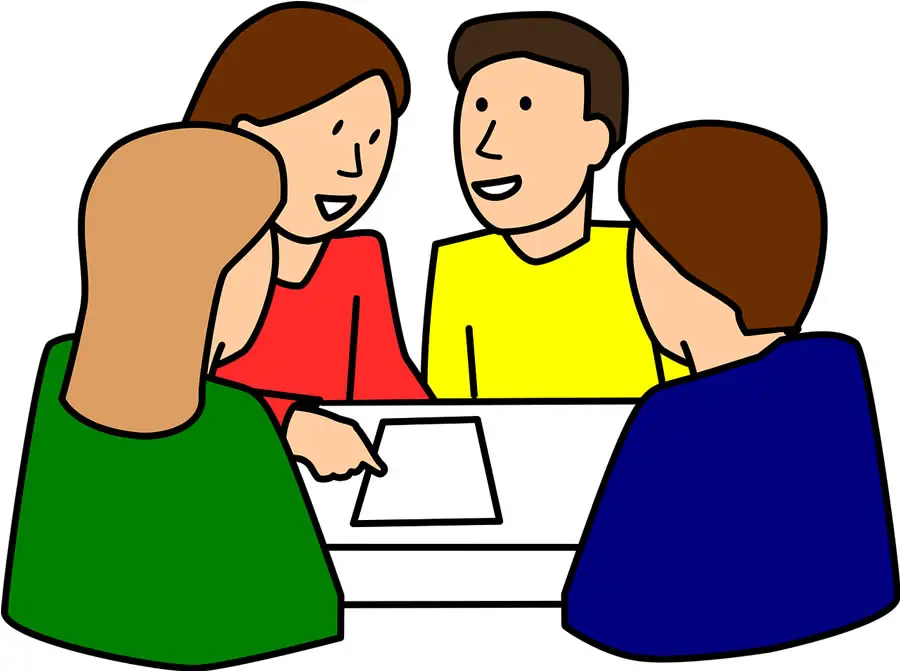This comprehensive lesson plan is designed to simplify the process of teaching the present perfect tense, offering educators clear guidance and practical activities. For a deeper understanding of the present perfect and its various uses, be sure to explore our detailed guide.
Table of Contents
Introduction
The present perfect tense is one of the most challenging aspects of English grammar for students and teachers alike.
Its complexity stems from the fact that it’s not strictly a present tense, and its formation involves the auxiliary verb “have” and a past participle. Additionally, the irregular forms of past participles pose a significant challenge for learners.
This lesson plan aims to demystify the present perfect tense, offering clear examples, distinctions, and practical activities to help students master this tricky grammatical structure.
Let’s start with basic information about teaching the present perfect tense!
Lesson Overview: Teaching the Present Perfect Tense
Teaching the Present Perfect Tense
Grade Level: Intermediate to Advanced ESL/EFL students
Lesson Duration: 60-90 minutes
Objective:
By the end of the lesson, students will be able to:
- Recognize and form the present perfect tense.
- Differentiate between finished and unfinished actions using the present perfect.
- Use the present perfect with “since” and “for” to describe actions that started in the past and continue to the present.
- Construct and respond to “Have you ever…?” questions.
Materials Needed:
- Whiteboard and markers
- Sample sentences for discussion
- Timeline handout for illustrating “since” and “for”
- Worksheets with exercises on the present perfect
- List of regular and irregular verbs with their past participle forms
Lesson Plan: Ideas and Activities to Teach the Present Perfect

1. Contextualizing the Present Perfect Simple Tense:

This week has been quite eventful. I have watched one movie so far, but I plan to watch more during the weekend. I’ve also finished reading a book that I started last month. Besides that, I have been to the gym twice, trying to stay fit. It feels good to be productive!
True/False Questions:
- The speaker has not been to the gym this week. (False)
- The speaker has watched more than one movie this week. (False)
- The speaker has finished reading a book that was started last month. (True)
2. Introduction to the Present Perfect with Examples:
Begin by providing students with relatable examples that contrast the present perfect with the simple past:
- Last week, I watched three movies.
- This week, I have watched only one.
These examples will help students see the difference between past completed actions and those relevant to the present.
3. Eliciting the Form of the Present Perfect Simple:
Guide students to identify the structure of the present perfect:
- Form: Have/Has + Past Participle
Emphasize that the past participle of regular verbs is formed by adding -ed to the base form of the verb, while irregular verbs have unique forms that must be memorized:
- Regular Verbs: play = played, visit = visited, receive = received
- Irregular Verbs: be = been, come = come, do = done
4. Distinguishing Between Finished and Unfinished Actions:
Help students understand the concept of finished versus unfinished actions by revisiting the examples:
- Last week, I watched three movies. (Is last week finished?)
- This week, I have watched only one. (Is this week finished?)
Create a table for students to fill in with time expressions:
| Finished | Unfinished |
|---|---|
| Last week | This week |
| Yesterday | Today |
Encourage students to contribute additional time expressions and create sentences to practice distinguishing between finished and unfinished actions:
- “I visited my uncle twice last week. But, I have visited him only once this week.”
- “I wrote three poems last month. But this month, I have written only one.”
- “I called my girlfriend five times yesterday. But today, I have called her six times.”
5. Introducing New Uses of the Present Perfect:
A. “Have you ever…?” Questions Use questions about personal experiences to introduce this structure:
- “Have you ever seen an Indian movie?”
- “Have you ever played golf?”
- “Have you ever met a world champion?”
- “Have you ever written a poem?”
B. Actions in the Past with Present Effects Demonstrate how the present perfect describes past actions that have an impact on the present:
- “Why don’t you want to eat lunch with us?” – “Because I’ve already eaten.”
- “Why don’t you want to read that book?” – “Because I’ve read it before.”
- “Why is he sad?” – “Because he has lost his purse.”
C. Present Perfect with “Since” and “For” Use a timeline to illustrate the use of “since” and “for” with the present perfect:
Example Timeline:
- 1990: Nancy moved to New York.
- 1992: She was appointed as a teacher at Jesse Jackson High School.
- 1994: She married Alan.
Students can then create sentences like:
- “Nancy has lived in New York since 1990 / for … years.”
- “She has been a teacher since 1992 / for … years.”
- “She has been married to Alan since 1994 / for … years.”
6. Production Stage: Role-Play Activity

- Instructions:
- Pair up the students and assign them roles where they will engage in a conversation using the present perfect tense.
- Provide each pair with a set of prompts or scenarios to guide their conversation. These can include asking about recent experiences, achievements, or activities.
- Encourage students to form questions and answers using the present perfect simple.
- Example Scenarios:
- Travel: “Have you ever visited a foreign country? Which one? How was it?”
- Hobbies: “Have you learned any new skills or hobbies recently?”
- Entertainment: “What movies have you watched this month? Did you enjoy them?”
- Daily Life: “Have you done anything interesting this week? What was it?”
- Role Play Example:
- Student A: “Have you ever traveled to another country?”
- Student B: “Yes, I have been to France. It was an amazing experience. Have you ever been there?”
- Student A: “No, I haven’t, but I have visited Italy. How long have you been back from France?”
- Student B: “I returned last month, and since then, I have been planning my next trip.”
- Follow-up:
- After the role-play, ask each pair to briefly share one or two of the most interesting things they learned about their partner during the activity.
- Provide feedback on the correct use of the present perfect tense and encourage students to use it in their everyday conversations.
Here are examples of questions and answers using the present perfect simple:
| Prompt | Question | Possible Answer |
|---|---|---|
| Travel | Have you ever traveled to another country? | Yes, I have been to Spain. / No, I haven’t, but I’d like to visit Japan. |
| Food | Have you ever tried sushi? | Yes, I have tried sushi several times. / No, I haven’t tried it yet. |
| Books | Have you read any good books recently? | Yes, I have read a great mystery novel. / No, I haven’t had time to read lately. |
| Movies | Have you watched any movies this week? | Yes, I have watched two movies. / No, I haven’t watched any movies this week. |
| Sports | Have you played any sports recently? | Yes, I have played tennis twice this week. / No, I haven’t played any sports for a while. |
| Learning | Have you learned anything new this month? | Yes, I have started learning Spanish. / No, I haven’t learned anything new recently. |
| Work/School | Have you finished your assignments? | Yes, I have finished all of them. / No, I haven’t finished them yet. |
| Music | Have you ever been to a concert? | Yes, I have been to a few concerts. / No, I haven’t, but I want to go someday. |
Conclusion
Teaching the present perfect tense doesn’t have to be an overwhelming task. By breaking down its structure, illustrating the distinction between finished and unfinished actions, and providing practical examples and activities, you can help students grasp this complex tense.
With consistent practice and reinforcement, students will gain confidence in using the present perfect in their everyday conversations and writing.


